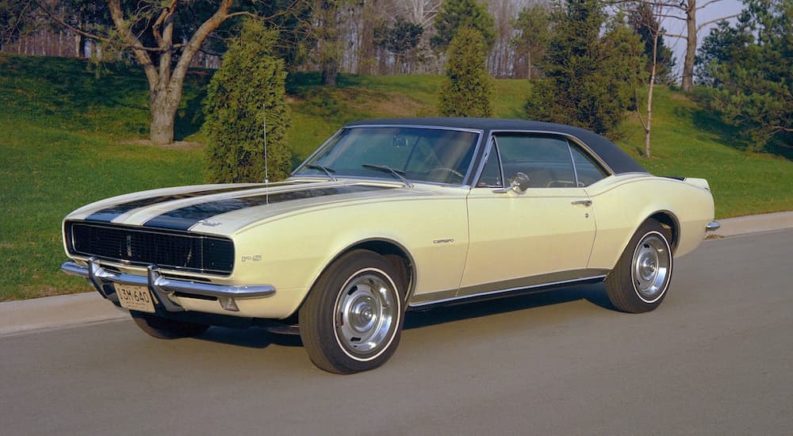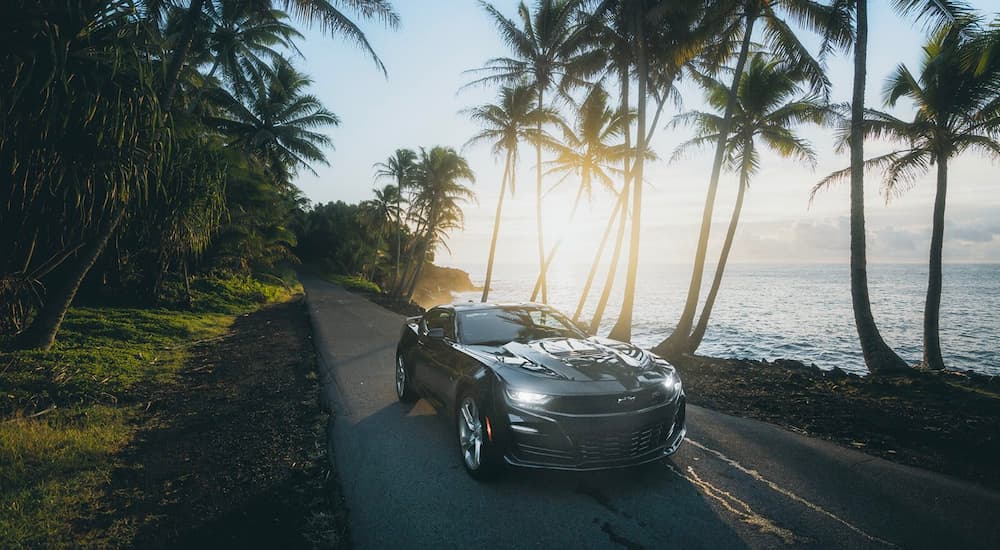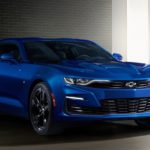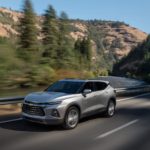When Chevy first introduced the Camaro in 1966, it attempted to catch up to the wildly galloping Ford Mustang. Being born of the muscle car fever of the time, a Camaro seen on a Cummings Chevy dealer lot in that first year of its production had a strong character, but it also had graceful lines that drew the eye along its length and back again. Chevy whipped up a whole new vehicle design in a short two years, based upon the already-existing Nova.
Despite borrowing the concept from another platform, the Camaro was well received even though twice the buyers purchased a Mustang in that same year. More than 50 years later, the Camaro has left a trail of dozens of designs, altering its shape to coincide with trends and offering a variety of styles within each model year.
The First Camaro Goes Nova
Chevy released the 1967 Camaro in September of 1966. Coupe and convertible body styles were both available, and a wide array of engine options could be bolted under the hood. In its first year of sales, Chevy offered the Camaro three trims, including the Z/28 high-performance model that featured a 4.9-liter V8 engine, racing stripes on the hood and trunk lid, and rally wheel rims.
In 1968 models, new options like hidden headlights and “Astro Ventilation” (that nixed the need for vent windows) were added, and the SS package received a black-accented grille, sport suspension, and dual exhaust. Enthusiasts laud the first generation’s final year as one of the Camaro’s most successful and nostalgic, with changes to the body that are still seen as one of the best model years of the Camaro overall.
A dual-plane grille, added for 1969, started a trend that became a standard of the Camaro’s style. Notably, the cowl induction hood made its statement of how much power could be harnessed from behind the wheel, and one of GM’s vice presidents remarked, “every effort was made to make it appear wider, sleeker, and more muscular.” Indeed. Even down to the rear spoiler, every line inspired a sense of straight-line speed with broad-shouldered elegance.
Splitting for Seconds
When the 1970 Camaro was finally released, it was late to the market. Dealerships didn’t see the first models until February, and the styling took a somewhat dramatic turn away from the appearance of the first generation. Gone were the sweeping strokes of the ’69 Camaro body sides, replaced by stronger straight lines and creases. Most evident were changes to the front fascia. The grille shrank, disappearing into a smaller space between the headlights, which were now rounded.
In 1970, the Camaro’s body slanted back to the rear axle, signifying a change in its driving dynamics, specifically, stability and ride handling. Some argued the Camaro lost a little of its original spirit. Until 1974, Chevy maintained the split-bumper design that is easily recognized as the first half of the second generation. Government regulations insisted a full bumper must be placed on all vehicles, so Chevy delivered. The hood and rear end were given new shaping to accommodate the entire bumper, though the characteristic V shape in the center of the grille was maintained.
An effect of this styling meant the bumper accentuated the line of the front end to make it more evident. For the 1975 model year, Chevy dropped the Z/28 trim and added a wraparound rear window, but the decision didn’t last long; the automaker re-released a newer version in 1977–minus the slash–calling it the Camaro Z28. The Camaro’s painted bumpers, a forgettable feature many enthusiasts would prefer to forget, were thankfully replaced with plastic bumpers in 1978. In that same model year, Chevy introduced the fan-favorite T top, and then, in 1981, ushered out the last year of the generation with little fanfare.
Third Time’s a Charm
Maturing into its 16th year of production seemed to have an energizing effect on the design team at Chevy, with the new Camaro setting a stage for 80s American culture. Round headlights were swapped out for square and then recessed into the line of the hood. The front fascia still held onto some of the V-shape of the front fender line, but the crease in the fender became the more prominent feature of the front end, continuing that line all the way to the rear bumper.
Squared-off, sharp angles replaced the Camaro’s formerly shapely style, and for the first time in its history, it became a hatchback. The angular, aggressive lines meant another switch in drivability, with more attention put on performance. These characteristics held firm for several years, though it took time to tweak the engine enough to satisfy enthusiasts seeking more power. By 1984, the Z28 included a 5.0-liter V8 and in the 1985 model year, the IROC-Z made its debut, spurring a new teenage love affair with the Camaro.
It also revved up a lot of enthusiasts who didn’t love the expense of the top-tier IROC trim, which didn’t deliver the goods when it came time to race. For 1987, Chevy brought back the convertible to the Camaro, a feature dropped in 1969, and then in 1988, the Z28 faded from the ranks until Dodge took over rights to the IROC name through a racing sponsorship deal. Chevy was back to using the Z28 trim in 1991, and then 1992 was the last year of the third generation.
Four Score and a Few Decades Ago
Once again, Chevy drew up a new body style that formed around better aerodynamics and functional air intakes like the SS hood scoop. The windshield canted at 68 degrees, raked-back for better airflow, and the headlights shrank in size to match the smooth exterior that no longer sported so many creases or bulges. Instead, the Camaro of 1993 looked like it could slip through the air with little effort.
Body styles available for that year included the coupe, convertible, or T top, but they all rode on the F-body platform for the first time—oddly, it took Chevy decades to switch the Camaro to the muscle car foundation, rather than continuing to use the original for so long. This design held fast until 1998 when Chevy refreshed the exterior with new oval headlights and a return of the grille in the front end. And then, in 2002, Chevy ended production of the Camaro.
Five Stars
Though it took Chevy eight years to bring back the Camaro, it chose to revive the nameplate in 2010 with a far different demeanor. Bold, aggressive, and powerful, the new 2010 Camaro bolted onto the automotive scene to much glee. Restoration of the 1969 styling so many enthusiasts adored was the inspiration for the sculpted body sides and hood bulge, even down to the slender spoiler to keep the back end tidily on the road.
Still, the new look couldn’t be more modern and muscular with metallic paint options, sticky performance tires, and an independent suspension. The narrow windows were tough for sightlines, but they sure did look cool with the deep tinting. In 2012, Chevy added the ZL1 trim, which upped performance with a supercharged V8 that could go from zero to 60 in 4.1 seconds. Chevy restored the old Z/28 trim in 2014, and then by 2016, the next generation was introduced for the Camaro’s 50th birthday.
A Solid Six
To commemorate its 50-year run, Chevy put the muscle car on a diet, shaving roughly 200 pounds of bulk and building it on a new platform shared with the Cadillac ATS. A much larger grille was added to the front fascia, though it retained the line of the grille and headlights and the sculpted body shaping of the previous generation. New engine options, including one borrowed from the Corvette, became the more enticing changes offered for the Camaro, along with its handling.
Changes to the exterior were slight for the new generation, even when a refresh arrived for 2019. Most of the changes showed in special editions or performance trims like the SS or ZL1. Mild tweaks to the front fascia—mainly to the grille—are indicators that denote one model year from another. Now in 2022, the sculpted body sides are once again smoother, the hood bulge continues to recall its origins, and the grin-like front end maintains the pointed V shape that has been part of every Camaro generation.






